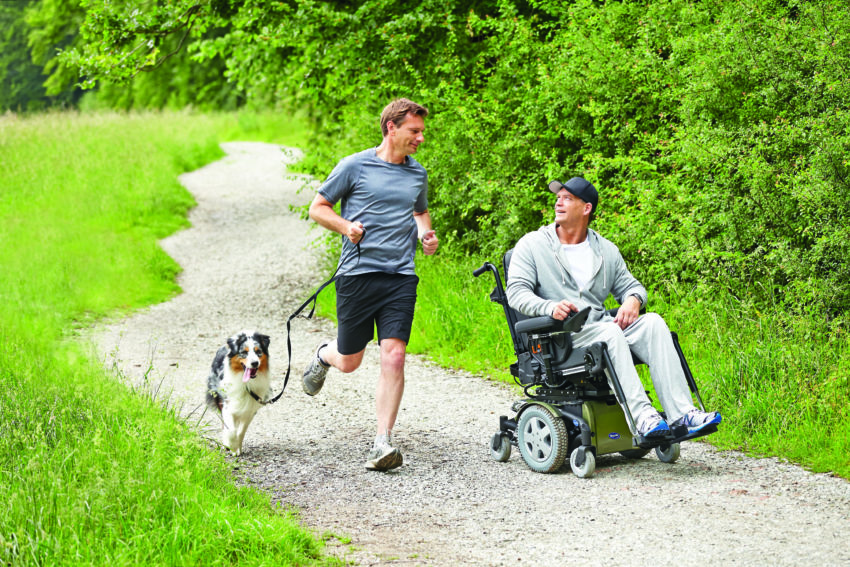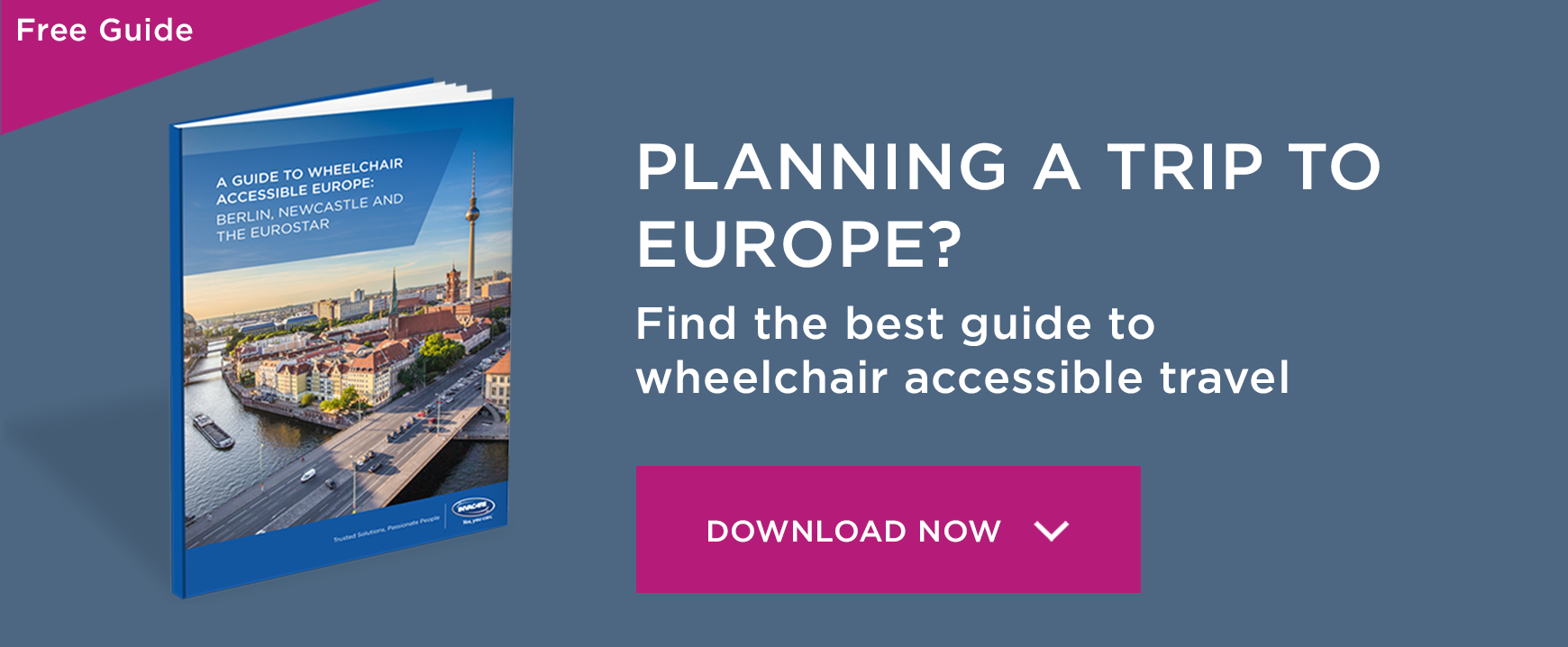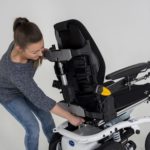Rough terrain wheelchairs vs outdoor models – a direct comparison.

Outdoor wheelchairs provide great personal freedom and as wheelchair design advances the range of models available is expanding.
Many outdoor wheelchairs are now highly adjustable to cope with different indoor and outdoor activities, though they are generally designed for urban environments and may not be able to cope with more ‘off road’ conditions. Alternatively, rough terrain wheelchairs are made for more challenging surfaces and enable wheelchair users to access forest walks, fields, coastal paths, cobbled streets, mud, snow and other diverse environments.
Understanding the differences between ‘outdoor’ and ‘rough terrain’ wheelchairs is important whether you wish to explore cities, attend festivals, seek new sights, go to favourite places, enjoy dog walks, family outings or take on more extreme adventures.
The most significant differences are often in the wheels. Both types of wheelchair usually have customisable wheels, including adjustable wheel-base, camber, height or brake position to suit personal needs. Rough terrain wheelchairs often have thicker and larger back ‘drive’ wheels with a knobbly surface, like off-road bike tyres, which provide greater stability and traction on uneven or slippery ground. Also, the front ‘steering’ castors are usually much larger and more stable, to better manoeuvre over difficult terrain.
Due to both the position and size of the wheels, rough terrain wheelchairs often have a larger overall wheelbase. This provides all important stability in all directions, but the impact of the larger dimensions should be considered if you are intending to use indoors as well.
Often high performance air-filled (pneumatic) tyres are used on all wheels, offering more shock absorbance and a smoother ride on bumpy surfaces. However, solid or PU tyres might be chosen instead if puncture is a significant worry.
For powered wheelchairs front-, mid- or rear-wheel drive options are commonly available. There are advantages and disadvantages for each, though rear wheel drive chairs generally offer more stability and power for rough terrains. Four-wheel or track-wheel drive wheelchairs are also available for even more challenging surfaces, though tend to be much larger overall and may not be suitable for urban or indoor environments. Some rough terrain models also have additional suspension and traction features for greater control and comfort.
The frame itself may also differ. Some rough terrain wheelchairs have higher ground clearance or adjustable seat and foot heights to better cope with obstacles on the ground.
Both types are designed to be as lightweight as possible and easily disassembled for transport or to clean off adventure-mud. However, the frames of rough terrain wheelchairs may also be reinforced and corrosion resistant. This creates a more durable chair, though may be heavier than other outdoor models.
Both models often have adjustable features for the seat, backrest, arms or footrest. But some rough terrain models have additional adjustments, such as adjustable centre of gravity or removable anti-tippers that might enable greater flexibility in particularly challenging environments.
These choices must be balanced with where and how you are going to use the wheelchair. Consider whether the additional stability of a larger rough terrain wheelchair is satisfactory to offset the greater turning circles and potential challenges of using this wheelchair in everyday life. However, the additional features of rough terrain wheelchairs may provide the safety and comfort required to go far beyond the beaten, or paved, track to a range of new experiences.
In each case, choosing the correct wheelchair is about matching your personal needs with the places you spend your time. Outdoor and rough terrain wheelchairs each offer choices to enable you to match your ride to the world around you.
Written by Clare Schwalbe







